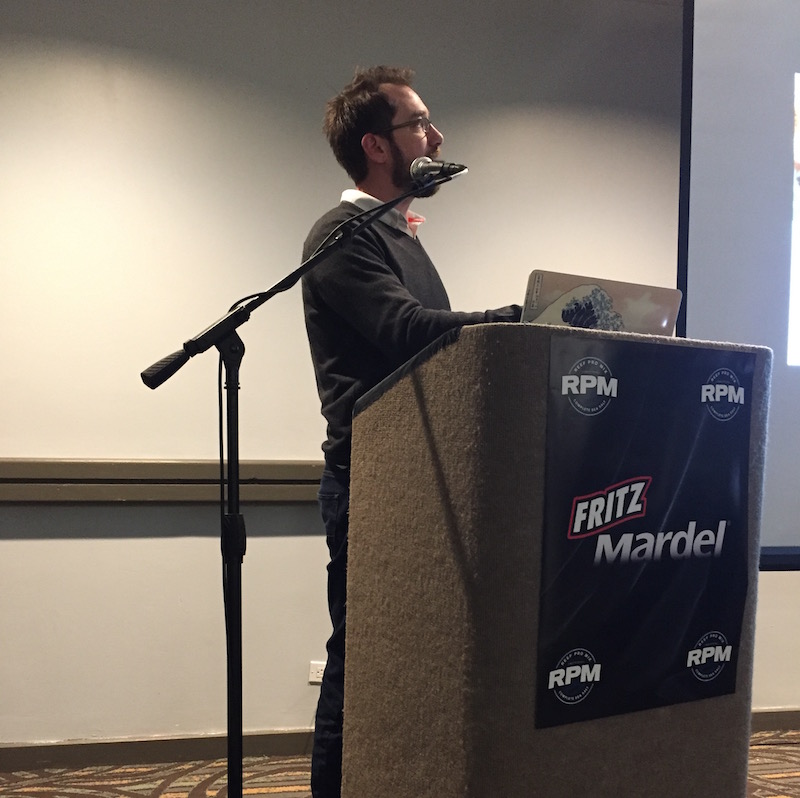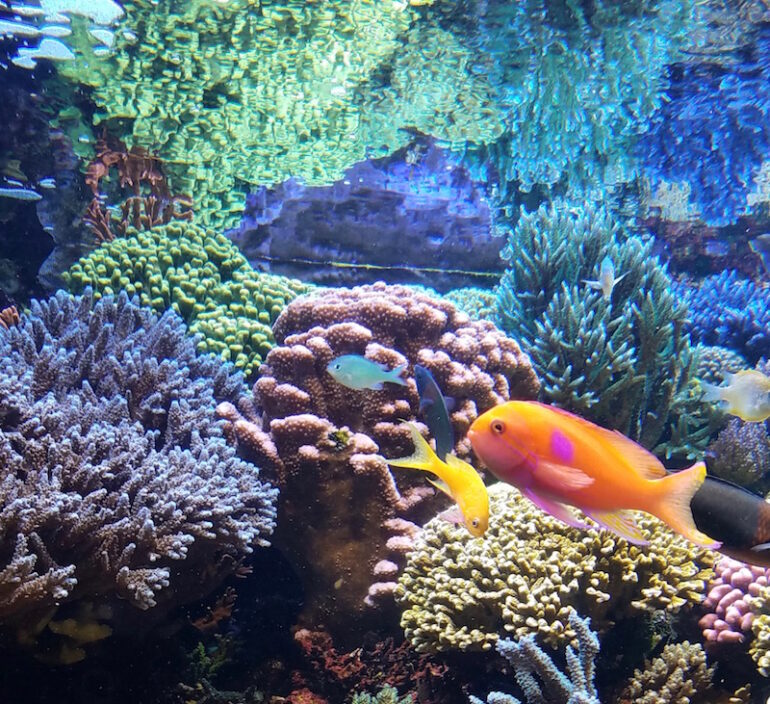While cleaning out my office, again, I came across some old written notes, yeah they had to be old as they were hand-written, that were a listing of some of the advice I had received over the years that I apparently had jotted down for use in an article.
Since I wrote this down I have gotten a lot of additional advice, finding this list nevertheless got me thinking about what is some of the best advice I have been given in this hobby over the years. In this regard I have been fortunate, in that during the early years of the hobby I frequently got to sit and share information with fellow hobbyists, many of whom are considered the true pioneers of the hobby.
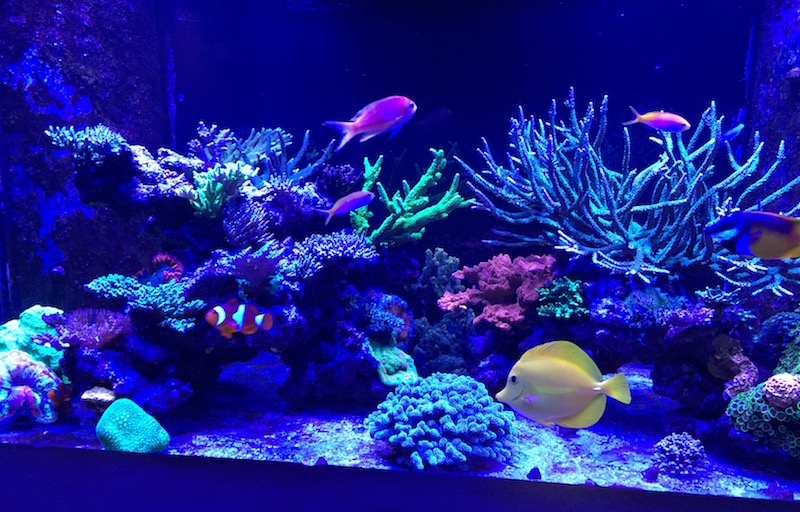
Besides being grateful for this, I am also grateful that I was smart enough to write down the pearls of wisdom that they gave me during these often impromptu discussions of the hobby. I don’t recall any of them being unwilling to share their secrets when questions were asked. Back then we often did not have many answers and in fact we realize we did not even have all the questions, but we did try to learn from each other’s successes and failures.
While I have given talks and written articles, I still appreciate how much I need to learn and how humbling this hobby can be. Maybe if I had heeded more of the great advice I had been given I would not still be making mistakes more often than I should. Looking over the list of advice I had written down I realize that much of the advice I was given is common sense and much of it is as applicable to every day life as it is to reefkeeping. So maybe there is a lesson to be learned there as well.
At the top of the list of advice I received was the admonition to take my time. Since I was young, I have always seemed to be in a hurry. When I was lucky enough to have a German reefkeeper stop by to see my tanks in the 1990’s he sat back and watched me for a while and then gave me that advice. He said something like take your time and enjoy the hobby, you do things so fast you aren’t enjoying how relaxing the hobby can and should be.
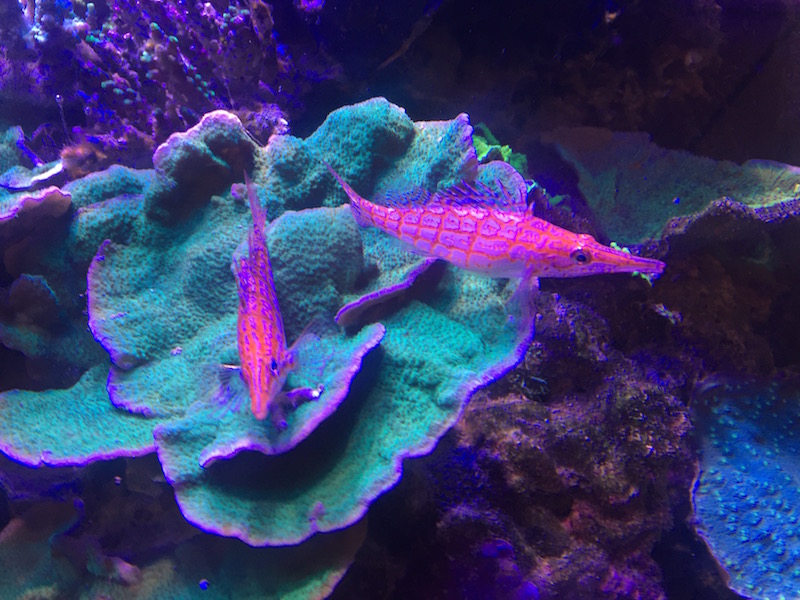
He was right as for the most part up until the last few years I always was in a kind of competition, mostly with myself, to constantly do something with my tanks. Whether it was adding a new tank, doing cleaning and maintenance or adding a new fish or coral, I was seemingly always in a hurry to do more. Only recently have I learned that the joy of the hobby comes from being able to sit back and enjoy my tanks rather than constantly having to tinker and manipulate them.
Along with taking one’s time a similar piece of advice I received was to plan as much as possible before doing anything. As the old cliché goes those who fail to plan, plan to fail. Having done tanks both ways, I must admit that proper planning goes a long way towards achieving long-term success. So while you are taking your time do so while properly planning everything about your tank.
Under this first piece of advice, was a second point that he no doubt also told me, and that was to give the corals time, they weren’t going anywhere. I laughed when I read this, as just as I was constantly changing things in the tank, so too was I constantly adding or moving corals around and I was not giving them time to settle in and grow. Unfortunately, I must admit that I still do this from time to time.

There are now so many incredible corals out there that I keep acquiring them and as a result have to move out or replace the already healthy colorful corals that I have. This is not a good way to have a tank that is vibrant and healthy for a number of reasons. A caveat to this piece of advice is to give the corals space when you place them in the tank.
This is difficult at times, as space in my tanks is limited, but when I add frags I do try to give them at least a 2” perimeter so they can grow without having to battle nearby corals. By following this advice, many corals in my tanks, have been able to grow without getting into major battles with their neighbors as they were growing and becoming established. This is not the case when I have placed corals, including frags, in close proximity to one another from the start.

One of the other pieces of advice I was given was given to me by my friend Alf Nilsen, I actually noted who gave me some advice. When he visited my tanks and saw how packed they were with lots of different corals he said he liked the color and health of the corals, but that the tank would look much better and natural and the corals would be healthier if instead of having so many species of corals they had been restricted to just 5 or 6 kinds, but that several colonies of each would be present.
He said that this would be much more representative of a reef and that my tank would look much better to the viewer. I wish I had heeded this advice, but I must admit that the call of so many colorful corals has always trumped it. Perhaps in the future I will set up a tank in this way, with only a few different species of corals, but with multiple colonies of these chosen corals.
The biggest problem here would be which ones to choose. If someone has such a tank already set up I would love to see it, as despite having seen hundreds of tanks I have yet to see such a tank. After being on numerous reefs, I do see how interesting and appealing this look could be, not to mention how inexpensive setting up a tank this way could be.
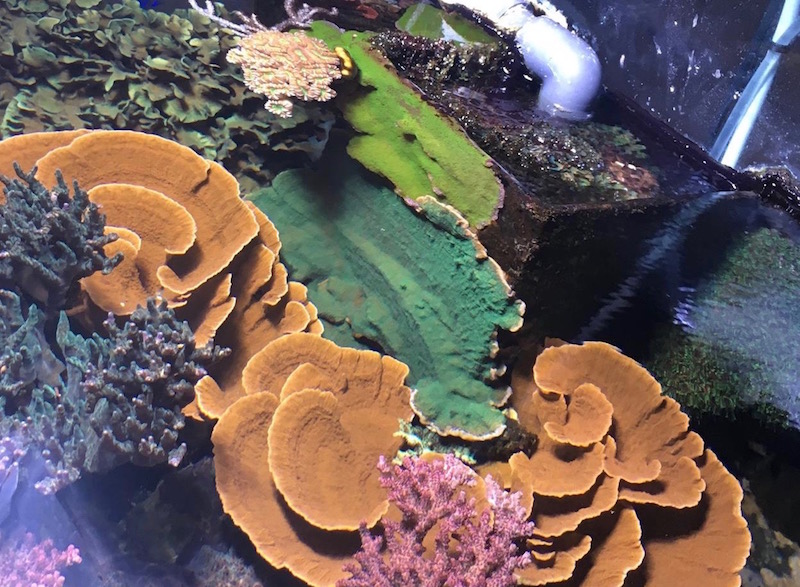
To most of us, this hobby at times, can be expensive. That is why this piece of advice I was given seems kind of counter intuitive: get the best equipment you can afford and it will save you money in the long-term. It is counter-intuitive, in that it does not seem to make sense that expensive equipment can save you money. But after seeing all the boxes of cheap broken equipment sitting in my garage, I must admit that trying to save money and having cheap stuff break and having to replace it is not a good way to save money in the hobby.
Some of my expensive protein skimmers and other equipment have been on my tanks for over 10 years, versus some of the cheap equipment I bought to save money has not lasted anywhere near as long. While I must admit that it is often difficult to figure out what is good for the money and what is not, the reviews of products here on the internet make it hard for products that will fail, to hide. And as all of us who have done this for a while know, the most expensive part of this hobby long-term is having to replace things again and again. It doesn’t matter if it is fish or corals or equipment, having to replace any of these is money wasted.
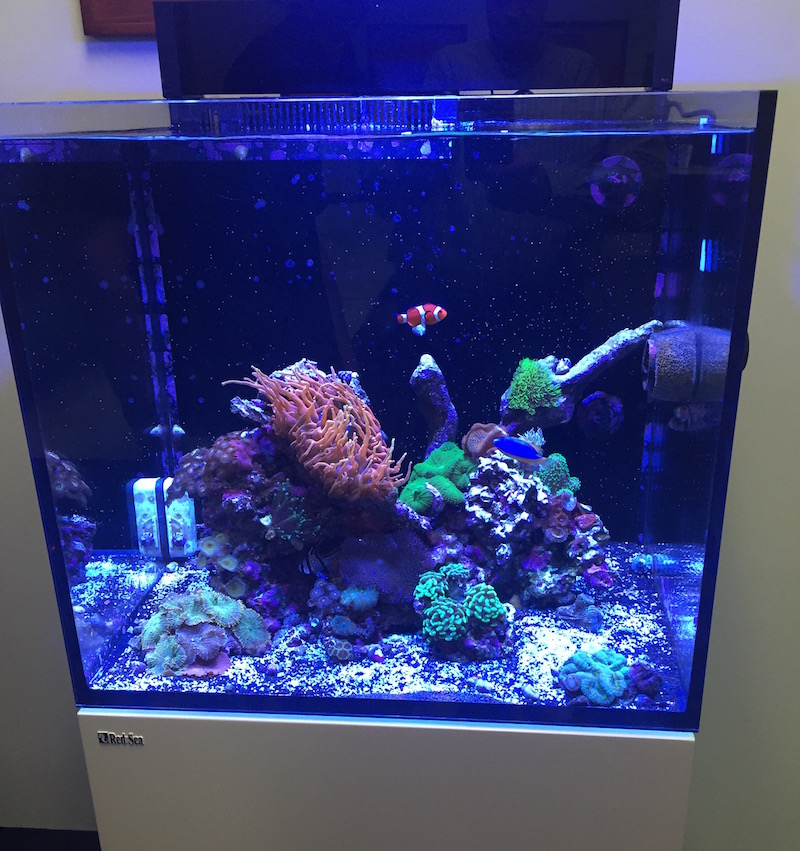
One of the best ways to keep track of what you are doing and what you are replacing is to keep a log. Probably one of the most useful pieces of advice I have been given is to log everything about the tank so that you can keep track of things rather than trying to remember everything. Sadly, I do get lazy from time to time and stop keeping a log, and every time I do this it bites me in the butt.
So now I try to keep a log of everything as knowing when things were added, including, fish, corals and equipment, what the parameters of the tank are and when things were cleaned or maintained, make it much easier to keep track of when something changes. The log is also a great way to keep track of serial numbers, reef related passwords and other important information about a tank.
I keep one for each of my tanks and it allows me to compare equipment and parameters in that if I am using two different heaters or powerheads or pumps etc., when they fail, I can compare how long each has lasted. More importantly keeping a log lets me see even small changes in parameters so that I can make changes or determine problems before they become major.
Keeping a log also makes it much easier to compare the parameters of my tank versus others, which at times can be important when I am adding new frags or fish to my tank. It is inexpensive to keep a log and there are now even sites online that allow you to do this quickly and also that allow you to to compare your tank’s parameters with others.

As I mentioned above, keeping track of my tank’s parameters is one of the best reasons for keeping a log. This goes hand in hand with the need for regular testing to take place. I was told long ago that you can’t tell what is going on in your tank unless you do regular testing. For the past 10 years, every Saturday morning before I do a water change, I test the parameters of my tanks and keep track in their logs. I test alkalinity, calcium, magnesium, pH, salinity, temperature, potassium, nitrate, phosphate and ammonia.
Even though there are monitors for pH, temperature and alkalinity I still manually test these just to make sure that the monitors are not off significantly and if they are then they get recalibrated. I know some hobbyists do not test for all of these parameters as frequently, I do because I have learned from my past mistakes not to take things, even if I think they are stable like salinity, for granted. By testing something even as simple as this one time I found out that my hydrometer was way off and another time that a slow leak was gradually causing the salinity in the tank to drop. If this parameter had not been tested regularly these small problems cold have become disasters.

In terms of disasters, one of the most common is also one that is often preventable. This is unfortunate in that every new hobbyist is given this advice as soon as they get into the hobby, yet few fully heed it even though it is a single word: Quarantine. Despite and possibly because of how good we have gotten at culturing and keeping marine fish and corals alive, we now have pests that were not a significant problem in the past but now can wipe out entire tanks if they are introduced.
The very nature of mariculturing and aquaculturing corals means that a lot of corals are in close proximity to one another. This proximity makes it easier when a pest invades them for it to get to neighboring corals as well. As a result, if a pest is present on one coral it is often present on the neighboring corals and this is one reason why pests are more prevalent now than in the past. Also because we are now so much better at keeping things alive where before we were happy to keep any marine animal alive for any length of time, now we can keep them alive for many years.
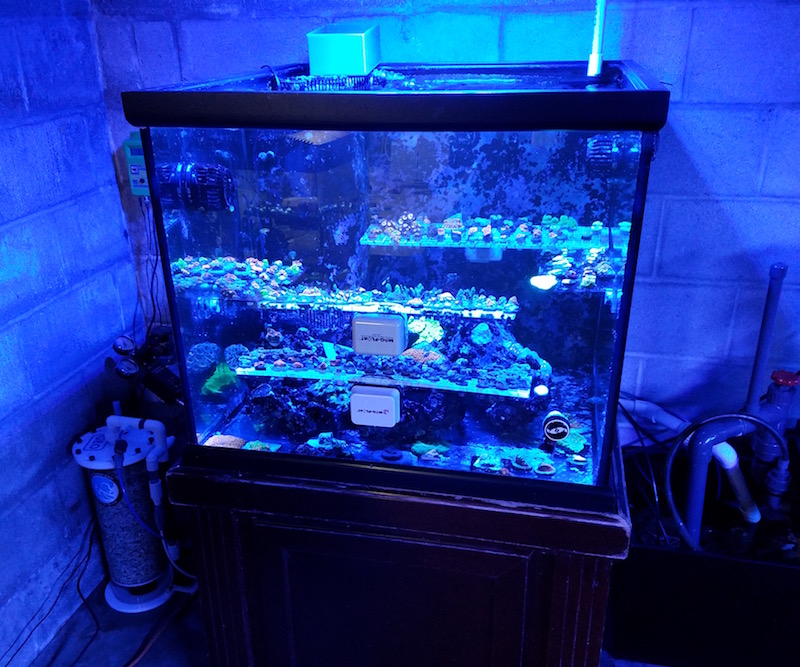
Because of this we now notice when a pest invades our tanks. So in order to prevent a pest from becoming a plague quarantining all new introductions is essential. There are many articles on the proper way to quarantine new specimens, so the only advice that I will add is give the quarantine process time. Many pests lay eggs that are immune to just about any dipping treatment so you need to give the eggs time to hatch so that you can kill the offspring. And some of these eggs can take over three weeks to hatch, so be patient. No reason to rush the potential demise of your corals.
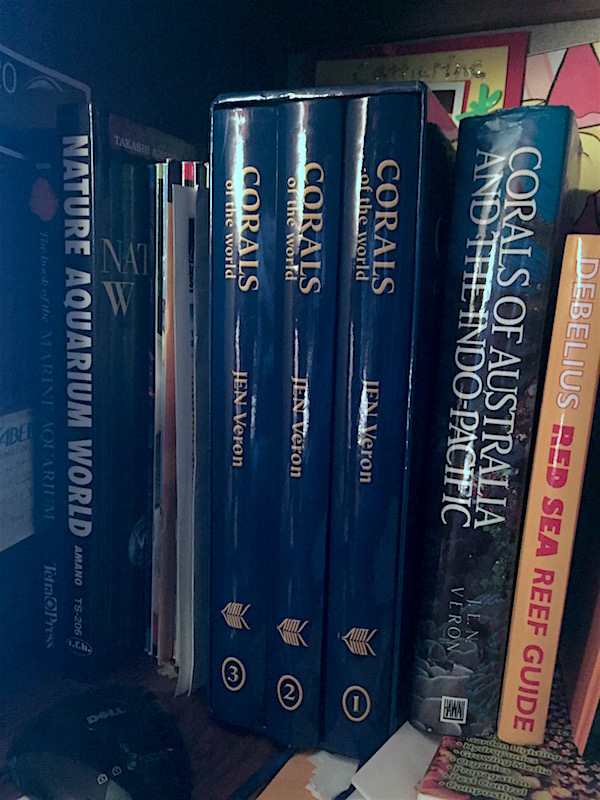
Be reading this article you are heeding one of the other pieces of advice I was given early on: Read as much as you can from as many different sources as you can find. No one has all the answers, but if you read enough eventually you will find something of use.
For the past couple of years I have not only been reading as much as I can on the net and in US magazines, but I have also taken to reading some of the European and Japanese magazines as well. If they have digital versions that is, as I am not a translator, but the internet does this easily.. Some of these magazines have given me insight into topics that are only starting to be discussed here so for me it is a great new source of information.
Reading to gain knowledge and understanding is indeed great advice as is similar advice to learn from people you trust. As I have said for years I love seeing other people’s tanks and learning from them. Sadly, I do not see or hear about tank tours or people visiting one another’s tanks as much as I used to. In past years, often when I spoke the club members who brought me in set things up so I and some of their other members could travel around and see a lot the member’s tanks.
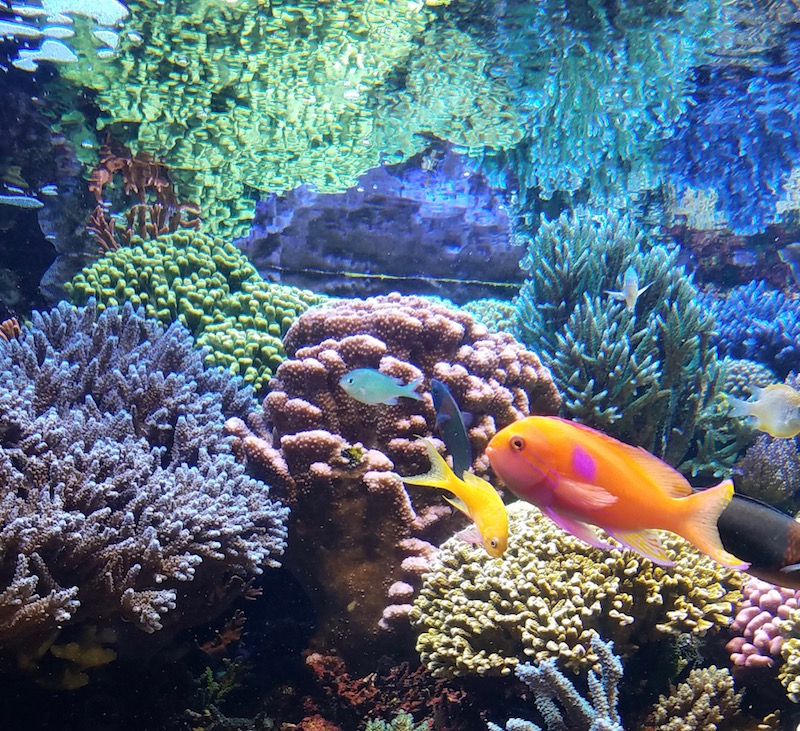
Me and other speakers also would often bring frags with us to trade with the members. Now sadly neither of these fun parts of the hobby seem to occur as much. This is regretful as seeing other’s tanks is still one of the best ways to learn new things and to avoid mistakes.
Obviously there is a lot of good advice out there and a lot of very successful individuals dispensing it. I have been fortunate in that I have gotten a lot of good advice over the years, looking back I wish I had heeded more of it. However, I do think I have followed the best advice I was given: have fun in the hobby and try to teach others from your mistakes.
I must admit that I have made many mistakes over the years but I have tried to learn from them and tried to teach others so they don’t make the same ones. And I still find the hobby one of the most fun things I do, so in that regard at least I have listened to one piece of advice I was given.
